One in five internet users are now on Twitter or another status update service
Some 19% of internet users now say they use Twitter or another service to share updates about themselves, or to see updates about others. This represents a significant increase over previous surveys in December 20081 and April 2009, when 11% of internet users said they use a status-update service.
Three groups of internet users are mainly responsible for driving the growth of this activity: social network website users, those who connect to the internet via mobile devices, and younger internet users – those under age 44.
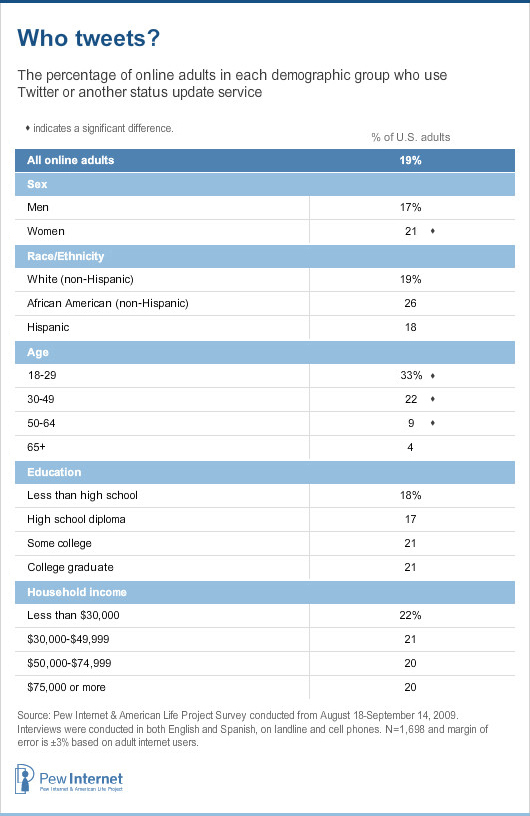
Social network users
Internet users who already use social network sites such as MySpace, Facebook or LinkedIn are likely to also use Twitter: 35%, compared to 6% of internet users who do not use such social network sites.
Statistical analysis of the Pew Internet Project’s September 2009 survey data shows that internet users who use social network sites are more likely to use Twitter or another status updating service, independent of other factors such as that group’s relative youth or propensity to go online via mobile devices.2
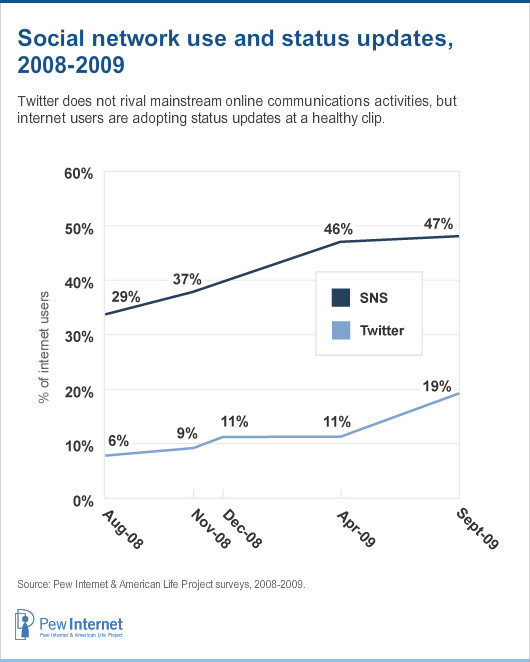
Mobile internet users
As of September 2009, 54% of internet users have a wireless connection to the internet via a laptop, cell phone, game console, or other mobile device. Of those, 25% use Twitter or another service, up from 14% of wireless users in December 2008. By comparison, 8% of internet users who rely exclusively on tethered access use Twitter or another service, up from 6% in December 2008.
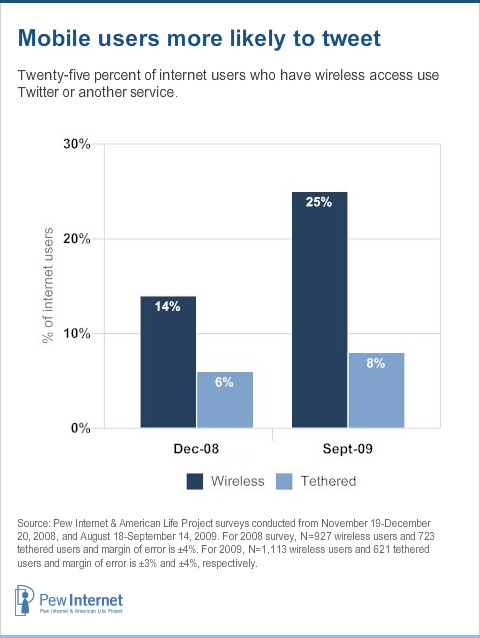
Statistical analysis also shows that wireless access is an independent factor in predicting whether someone uses Twitter or another status update service. It is not simply because this group is likely to be young or tech-savvy. Owning and using a wireless internet device makes an internet user significantly more likely to tweet.
In April 2009, the Pew Internet Project asked wireless internet users why they value their mobile connections.3 Not surprisingly, Twitter scratches an itch among mobile internet users to stay in touch with other people and to share or post content online.
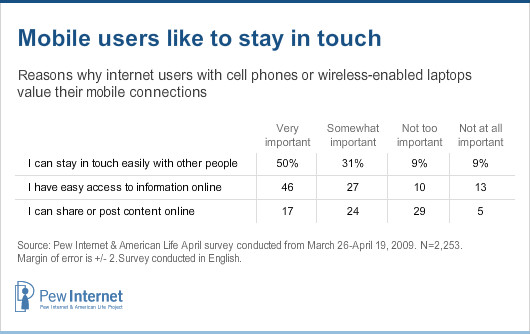
Indeed, the more devices someone owns, the more likely they are to use Twitter or another service to update their status. Fully 39% of internet users with four or more internet-connected devices (such as a laptop, cell phone, game console, or Kindle) use Twitter, compared to 28% of internet users with three devices, 19% of internet users with two devices, and 10% of internet users with one device.
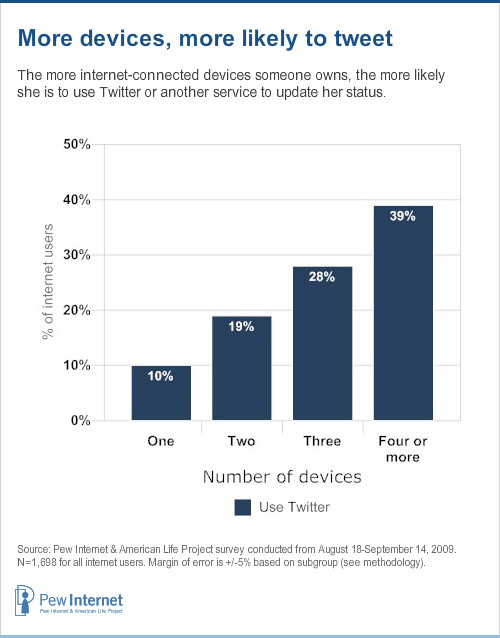
Younger internet users
Age is another strong, independent predictor for use of Twitter and other status updating services. Internet users age 18-44 report rapid uptake of Twitter over the last nine months, whereas internet users ages 45 and older report slower adoption rates. For example, 37% of internet users age 18-24 use Twitter or another service, up from 19% in December 2008.
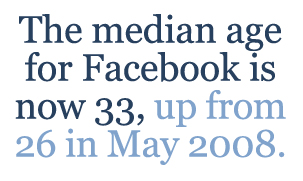
The median age of a Twitter user is 31, which has remained stable over the past year.4 The median age for MySpace is now 26, down from 27 in May 2008, and the median age for LinkedIn is now 39, down from 40. Facebook, however, is graying a bit: the median age for this social network site is now 33, up from 26 in May 2008.
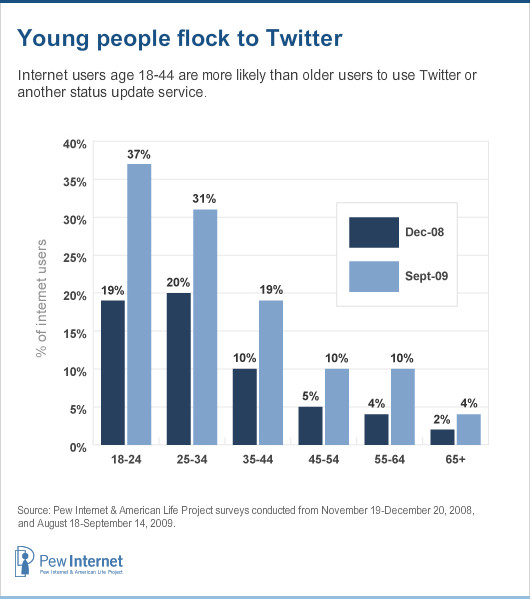
Further research
Twitter has attracted the attention of other researchers, who find that it is a widening network with as many listeners as contributors:
- comScore’s continuous surveys of internet users and real-time network data capture confirm our findings: Twitter traffic exploded over the last year, going from about 2 million unique visitors per month in December 2008 to over 17 million in May 2009.5
- Harvard Business School researchers analyzed a random sample of 300,000 Twitter accounts and found that “the top 10% of prolific Twitter users accounted for over 90% of tweets.”6
- Sysomos analyzed 11.5 million Twitter accounts and found that most people post just once per day (and one in five have never posted).78
It will probably become more difficult to track status updating as an independent activity as social network updates feed into Twitter and vice versa. For now, it is clear that a “social segment” of internet users is flocking to both social network sites and status update services. This segment is likely to grow as ever more internet users adopt mobile devices as a primary means of going online.




